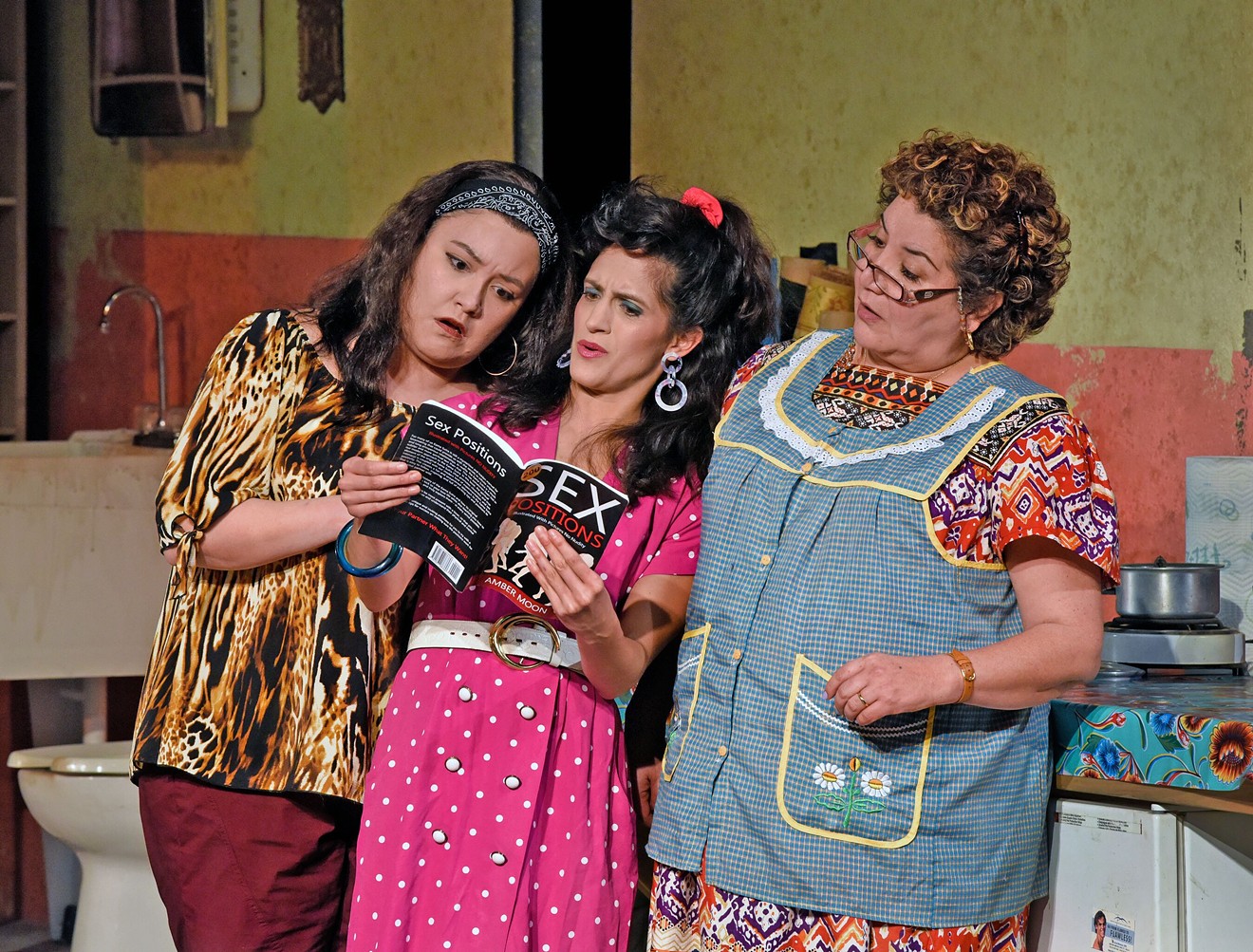The play includes much more than body positivity. It’s one of few productions featuring not only a completely female cast but a completely Latina cast. The ethnic aspect of the play lends itself, of course, to the aspects of the story dealing with immigration and deportation, but also to the cultural background that flavors the story, to the incredible set design and, ultimately, to the costume design that signifies the women’s own skill and cultural history.
The unfortunate danger of a diverse cast is its tendency to cheapen the groups it represents by developing characters and making jokes based purely on stereotypes. The play, written by Josefina Lopez, endorses a fair number of stereotypes, but it doesn’t enable them to constitute the entirety of its characters, its story or its humor. Instead, the play allows a real story to bloom about people the audience cares about — people indeed whom the audience can’t help but cheer on audibly well before the curtain falls.
Its events could just as easily occur today, and every one of the issues it addresses would still be relevant (indeed, the perpetuity of the play’s relevance is rather depressing).
tweet this
Real Women Have Curves claims to be about recent high school graduate Ana (Tatiana Lucia Gantt) recognizing her own naiveté as she witnesses the significance of how hard life is for her immigrant family and coworkers and yet how powerful they become when they stand together and support each other. This is exactly what the play advertises: “Women are powerful, especially when working together.” The synopsis and tagline limit the greatness of this play and all that it has to offer.
Although Ana lays claim to the role of protagonist, she is perhaps the least important character in the story. Her development is one everyone in the audience has seen before (and has probably gone through themselves). She wants to get away from her family, from working at her sister’s factory, from the constraints of the older generation upon the younger. Every teenager has to learn that they don’t know as much as they think, that their mother is sometimes right, and that sticking with your family matters. Gantt portrays Ana’s development with conviction and wit, and the audience can be grateful that, although young and foolish, the character never comes across as obnoxious. But this is not a coming-of-age story.
It’s a story of what women of all ages have always had to endure. Real Women was written and takes place in the '80s, but its events could just as easily occur today, and every one of the issues it addresses would still be relevant (indeed, the perpetuity of the play’s relevance is rather depressing). Nor are the struggles restricted to those of one demographic: every single audience member can find some reflection of themselves onstage. The struggles these women face are timeless, and much more intriguing than adolescent transformation.
The variety of problems the women deal with also allows the play to attain a rare level of reality. Life doesn’t let you deal with one problem at a time. Often, everything comes at once, and there’s nothing you can do about it but continue to live. Problems don’t make way for one another, rather they cram themselves far beyond your capacity to handle them.
The audience sees this in Real Women Have Curves. All of these problems force their way into a two-hour story: the oppressive heat of the factory; the cute boy who pretends to be good to Estela only to harass her on their first date; the omnipresent van circling the block, threatening to snatch up any undocumented workers (which, Ana explains to her journal, sounds better than illegal aliens) from the factory; capitalism stealing the women’s hard work for a pittance and reselling it for a fortune; the women’s own bodies, be it for their infertility, their agedness, their fatness. The women even become each others' problems as tensions rise in a stifling, exhausted environment.
In a story dealing with so many different breeds of struggle, it would be easy to lose focus and fail to capture the gravity of any of the struggles. However, the production's actresses carry the weight of their roles with skill, drawing the audience completely into the complex web of their lives. The story doesn’t only keep us from forgetting about each struggle; it also makes us care about each one.
But the play also weaves its intensely serious issues with lighthearted ones throughout. As the women face the loss of their factory, hunger, abuse and deportation, they laugh about a book describing 200 sex positions and delight over chisme. Estela couldn’t get her green card because she has a criminal record — but her crime is laughable and silly. They’re all starving, and yet refuse to eat another serving of the mother’s never-ending supply of mole.
This dichotomy serves multiple purposes. For one, it keeps the audience laughing, makes the characters likable and makes their miserable situation endurable. But more importantly, it shows that in the midst of the greatest ordeals, life can remain fundamentally good and happiness can prevail.
Real Women Have Curves, written by Josefina Lopez, directed by Christie Vela, produced by Dallas Theater Center, runs at the Kalita Humphreys Theater through May 19.











